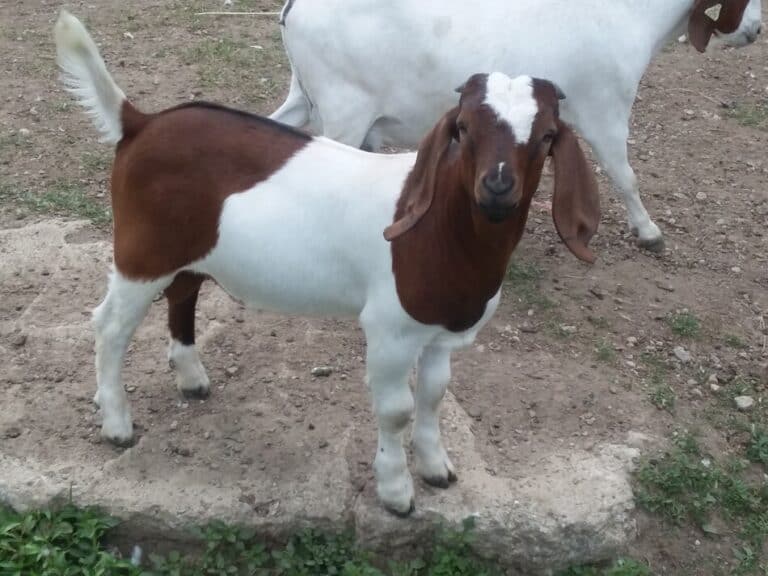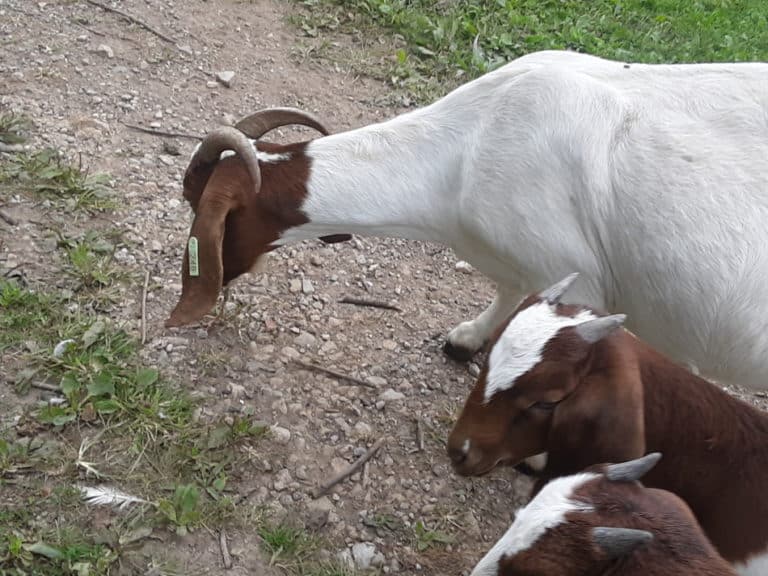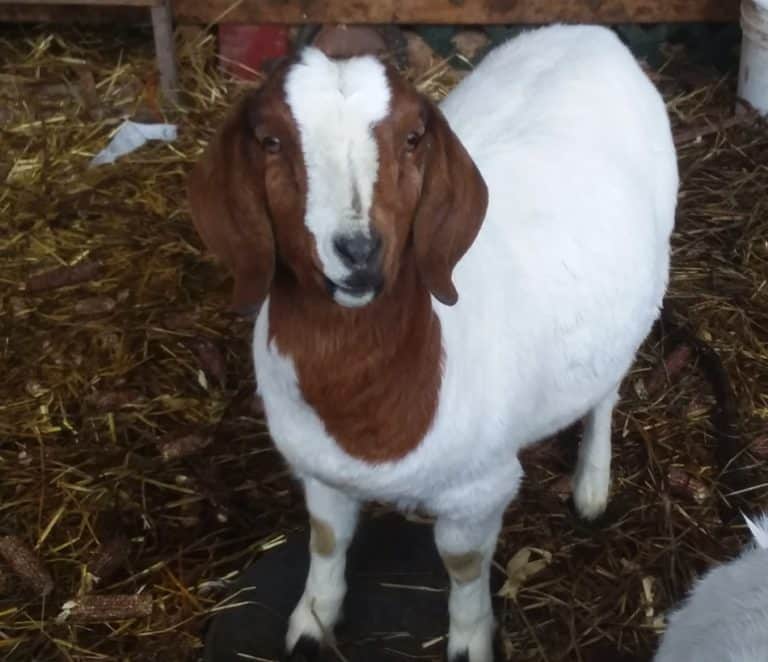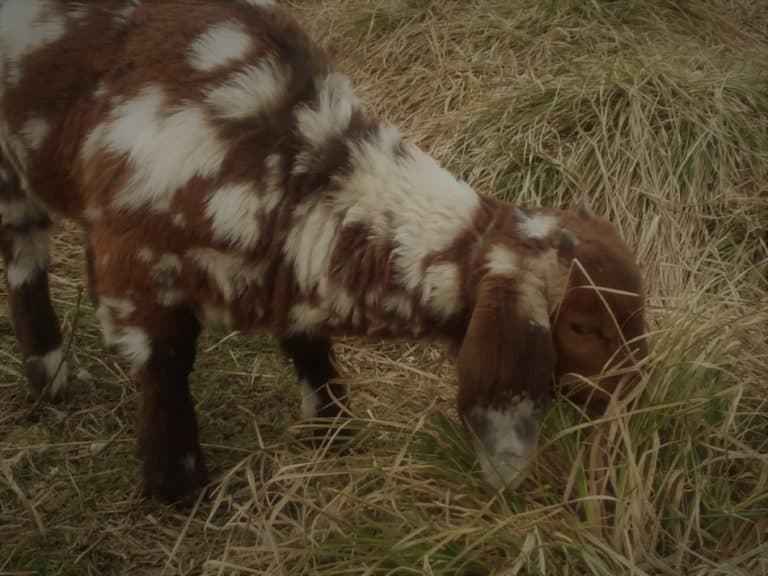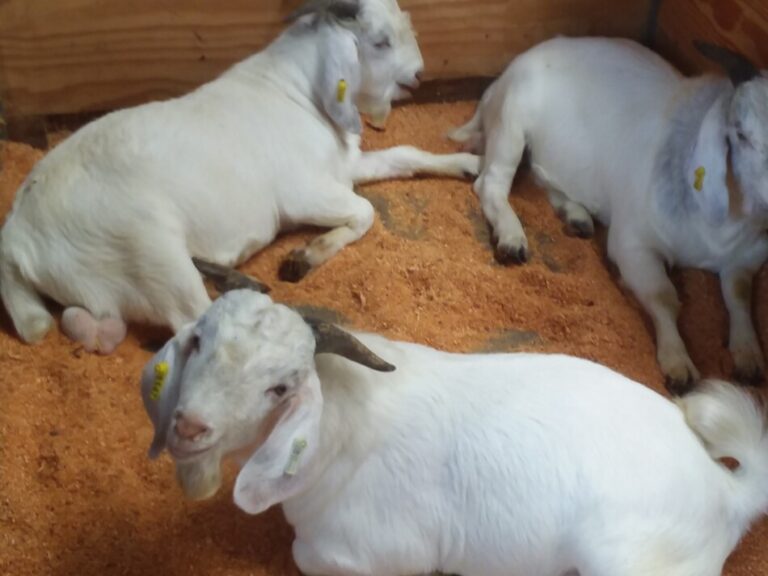Goat Feeding and Nutrition: How Best To Feed Your Goats
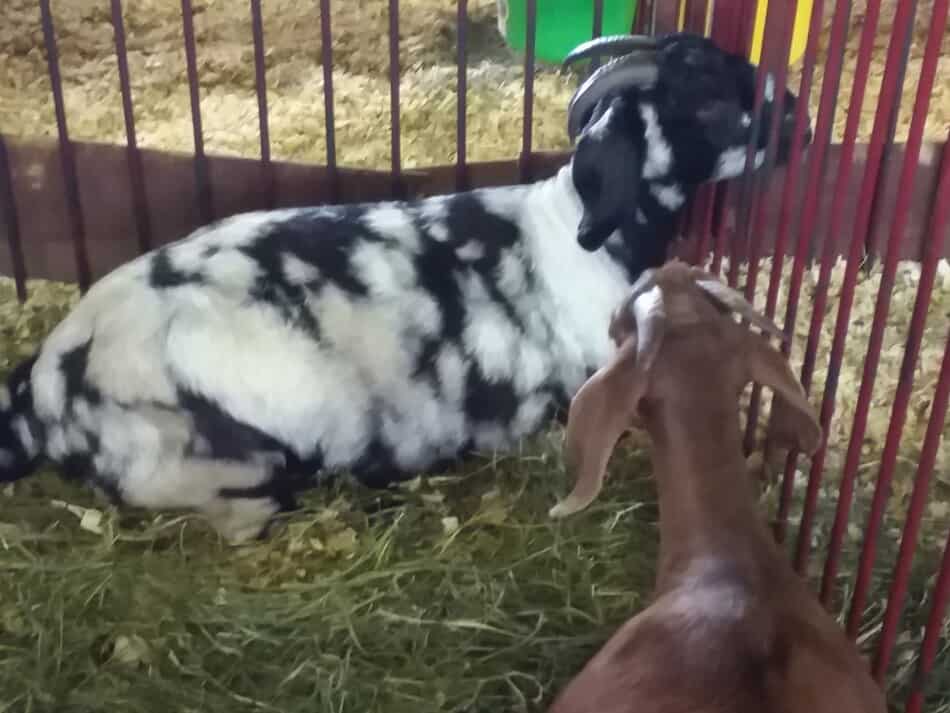
Now that you have decided to get a few goats, you’ll need to figure out what you should be feeding them. This is a can of worms, for sure!
Some folks say “just let those goats eat brush and forage for their keep” others say “give the goats a pelleted ration and some high test hay, that pasture is just for exercise”.
Those two views are polar opposites, so, which is correct? How should you feed your goats?
A general recommendation for feeding goats is free choice water, grass hay and for most goats, grain. Grain for goats: kids and lactating does need higher quality feed (14% protein) and maintenance goats need less, more like 10-11% protein, given in the amount required to keep goat in good condition with a shiny hair coat.
This is the part where some folks are going to be frustrated, because the truthful answer to what should you feed your goats is: you guessed it, it depends.
Are Meat Goats Profitable? is an article that I wrote to help you figure out the basic costs of raising your own herd of goats.
What your goats need depends on so many factors, a few of which are:
- location
- time of year
- stage of reproduction
- sex of goat
- genetics of goat
- management system
For anyone to tell you, “oh, you just blah, blah, blah” is way too simplistic! Goats vary so much in genetics, management and feed situations that a blanket “one size fits all” recommendation is misleading.
So, here are some overall guidelines to help you get started. This will involve research on your part, to figure out the specifics and a watchful eye to monitor your herd to see how your feeding plans are working!
One piece of advice, before we go further: be willing to change. Your goats need what they need. Once you get “in the trenches” you may find your herd requires different management than you had planned on providing.
If you want to manage them in a different way than they need to be managed, you have the wrong goats, they don’t fit you and your situation. Get goats that match your plans or adjust your plans to match your goats.
Goats need high quality feed
Goats need a high quality diet full of goat appropriate nutrition, especially for any goat kids. The idea that goats can eat anything and do well is not true!
Even the working goats that are out eating “scrub” or brushy areas are actually eating the nice growing points of the brush, that’s where the energy is!
Nutritional Feeding Management Of Meat Goats is a NC State Extension article that goes into what is a high quality feed for goats and why goats need better feed than other ruminants, like sheep or cattle.
Find a goat mentor to get you started off right
Before we go any further, you should look around your community, even an extended community, like a trusted group online, and find someone you can “talk goat” with. You need a goat mentor.
You’ll get experience as you learn and grow, but experience comes from messing up as well as succeeding, so why not limit the messing up by getting help from someone with experience?
Feed is particularly regional, some things that work great for me are not a practical answer for someone else who live in a very different situation or has completely different genetics than me.
Get help from someone who makes sense to you and is doing what you are planning to do with the type of goats you have. This person will be invaluable to you, a goldmine of helpful information!
Ask around. If you are sincerely looking to do the best job possible managing your herd and just need some support, most folks are happy to offer a bit of guidance or are able to tell you someone who could help.
If you have not come across it before, Onion Creek Ranch has a library of goat articles on all manner of goat management challenges, from feed to specific health challenges. Check it out, it’s really a wonderful resource!
Know the protein % of your goat ration
First off, you need to know the appropriate protein percentage of your goat’s feeding ration. This protein level will change as the goat grows and as it goes through different reproductive stages, like from gestation to lactation.
Here is a quick list to get you the basics:
- Kids, weaned-14%
- Yearlings-12%
- Does, gestation-11%
- Does, lactating-14%
- Does, dry-10%
- Bucks-11%
Remember, these numbers are for total ration, not just grain. This means you need to take into account all of the things your goats are eating and make sure the total hits the protein needs for the goat.
Also note that nutritional needs change throughout the goat’s life, notable stages of high nutritional needs being growing, from newborn kids up to yearlings, and lactation.
The good news is that a nice hay will get you these numbers, especially for a dry doe (dry means non milking adult female). If you are feeding alfalfa, you should easily hit these numbers for your goats.
Get your goat hay tested
One of the things you may not realize is that hay comes in differing qualities depending upon the maturity levels the hay was harvested at, the plants in the hay, if the harvest went well or the hay got rained on, etc.
The point to this story is that you never know exactly what you are getting until you test.
Testing your forage is not a miracle cure! Forage testing does nothing by itself, you still need to implement changes, but the testing allows you to intelligently choose the changes to make.
You will have a better picture of what you are working with, nutrition wise, so you can compare that with what your goat’s need and figure out what you are missing in your herd’s ration.
If testing forage is out of the question, you’ll need to be on high alert for changes in herd health and spend more time observing your herd to make sure they are getting what they need.
This is a great place to have a goat mentor, especially someone who lives close to you. Your goat mentor will be able to sort through your situation and help you figure out what you need to make your herd reach it’s potential.
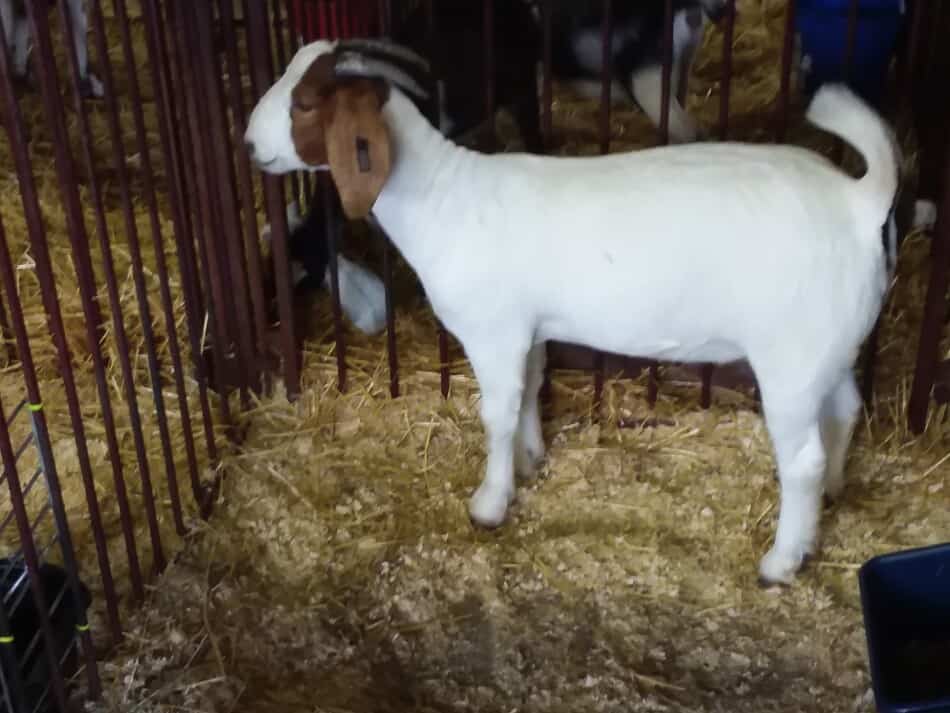
Provide your goats with minerals
You can provide your goats with a mineral block and let them lick it, as needed. The good news is, this is easy. The bad news is a mineral block probably does not match what your goats need.
If you prefer, give them a cafeteria style mineral feeder, which has a compartment for each mineral and they can choose for themselves which mineral to eat, when and in what amount.
Of course, this type of mineral feeder will cost more initially to set up, but it will save overall in your mineral costs per year since the goats will choose to eat only the specific minerals they need.
Of course, you also have the option of kelp, which animals seem to love! The only catch is that most things like the taste of kelp and keep eating it, which can be costly to you.
It will be less expensive to put together the cafeteria style mineral feeder and let the goats pick what they need rather than letting them suck down a lot of kelp because it’s tasty.
Observe the goat herd, how do they look?
The easiest way to know if you have your goat ration right is to look at the goats! Do they look happy, with slick hair coats and plenty of sass? If so, you are probably doing things right. If not, let’s get your goats figured out.
How the goats “feel today” will change, especially if you live in an area that gets colder weather, but overall, your goats should look good, no matter the season.
If your herd just does not have their usual sparkle, has a rough hair coat, or are not performing well on the feed your are giving them, something is up.
Monitoring Body Condition Of Meat Goats, NC State Extension, will give you more details on what your goats should look like and when, for example what the body condition of your does should be before breeding season.
Goat nutrition needs change
If your goats are not doing as well as you think they should, are you taking into account that nutritional needs change as the goat grows and goes through various parts of her lifecycle?
Easy examples of very different nutritional needs in the same goat are when she is in her lactation versus the dry (non milking) times. Same goat, very different needs and appropriate ration.
The second big nutritional demand is for growing goats, this is for anything under a year in age. To get your breeding stock up to the needed size for the breed, you’ll have to keep them on growth promoting diet.
The same is true for your market kids, they have to be eating well to be growing well to sell well.
Pay special attention to kids at weaning time. Up until now, they have been able to get “help” from mom, now they are on their own for all nutrition.
This stage of growth requires high quality, very palatable hay and chances are a nice creep feed, as well. If you are not a fan of grain, know that your goats may need it anyway.
This depends upon the growing conditions in your area and the genetics of your goats. If your goats look like they are not quite getting what they need, you need to change your management to fit your goats.
If you can find a small ruminant nutritionist, consider yourself lucky! And get her advice and use it!
I find goats are actually one of the more difficult animals to feed, they have very specific needs that are challenging to figure out. This is why you want to find that goat nutritionist!
Parasites are stealing from your goats
You may be asking yourself, why is this section about parasites when this is supposed to be about nutrition? That’s easy, parasites steal from your goats and your wallet!
This is a biggie, how are your goats doing weight and hair coat wise? If you are feeding your goats to the best of your abilities and are still not getting the growth you feel you should, consider checking for parasites.
If your goats are carrying a large parasite load, you can feed and feed and feed, but will not see results! They may even continue to get worse! Why? Because you are feeding the parasites and not the goat!
Deworm your goats. Small ruminants seem to be especially prone to having problems dealing with parasites. Both sheep and goats get run down quickly when their parasite load gets overly burdensome.
If you are having a problem with parasites in your herd, hit them hard with a dewormer. Your vet can tell you which one should be used for your area.
Keep track of which dewormer you are using, the doseage and when you use it. If you start having problems with your dewormer not working, this is information your vet needs to help you figure out what dewormer to use instead.
If you have both sheep and goats, you really need to be on top of your parasite control program! Goats and sheep can transfer parasites back and forth, meaning they give each other worms.
For the most part, cattle and goats or poultry and goats foraging together is not a big deal, it’s actually good since they are not hosts for the other animal’s parasites, so any parasite eaten by the “wrong” animal will die.
Multi species grazing is super, it reduces the parasites available in your pasture looking to get into your goats!
Resources:
Goat Feed Needs Chart from TSC website, I used the percentage of protein for each class/group of goats
